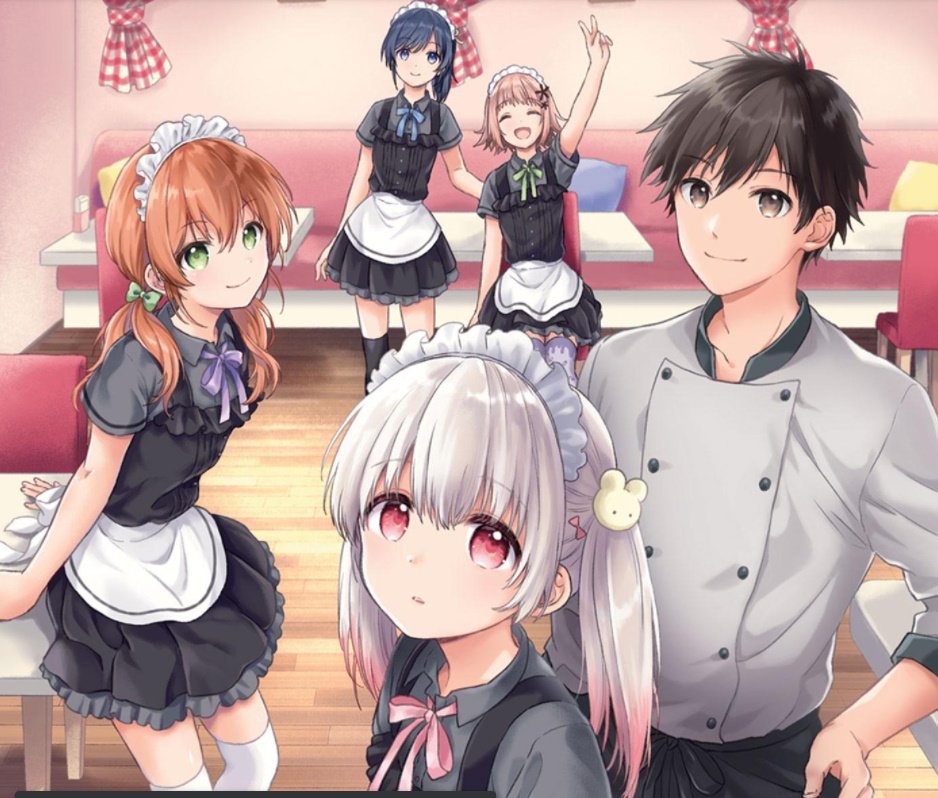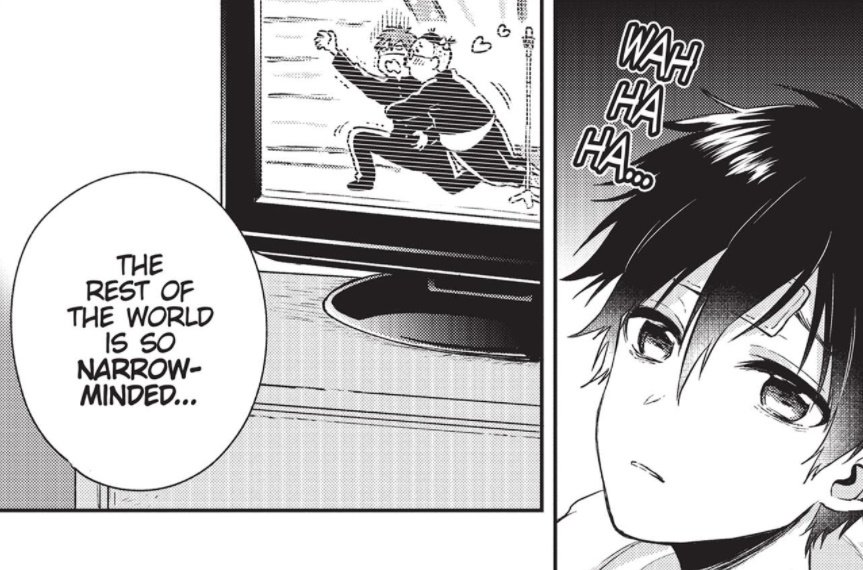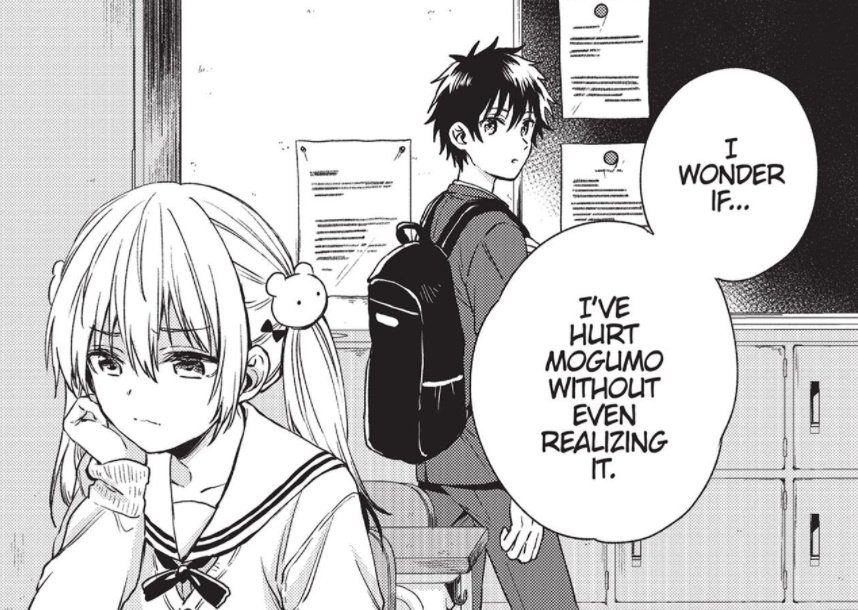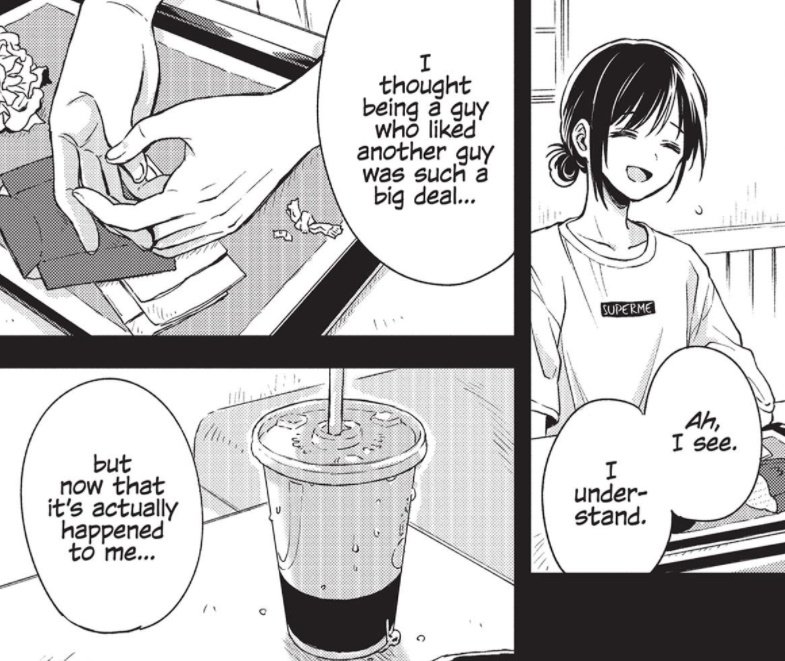Acceptance isn’t always easy in Love Me for Who I Am’s second volume
Kata Konayama’s Love Me for Who I Am firmly established itself in its first volume as a story about exploring gender identity, sexuality and acceptance of others. Specifically, the first volume focused particularly on the gender identity aspect, with protagonist Mogumo educating their new colleagues at Café Question about being non-binary — and several of the existing Question employees starting to look at their own gender in a new way as a result.
This is all very positive and nice, but we got the first hint of conflict towards the end of the first volume of Love Me for Who I Am, as Mogumo’s childhood friend Kotone attacks Tetsu, Mogumo’s classmate and the one who encouraged Mogumo to start working at Question. Tetsu’s initial justification to Mogumo was that Question was staffed by people “just like you” — though at this point, he was working on the mistaken assumption that Mogumo was an otokonoko: a boy dressed like a girl.

It was clear from the outset of Love Me for Who I am, however, that Tetsu had always had an interest in and perhaps even an attraction to Mogumo. He saw them looking lonely and witnessed them making a wish to find friends who understood them, and his heart ached for them. While his offer to bring them on at Question was based on a mistaken assumption, it was done with good intentions — and after everyone had a good heart-to-heart about the matter of gender identity, things worked out nicely.
Except in Tetsu’s case. Tetsu is a boy — not an otokonoko, not a trans woman, not a non-binary person, just a boy. And, as such, for reasons initially unknown, Kotone sees him as a threat to Mogumo. She attacks him by throwing water over him, warning him away from Mogumo — but he can’t ignore his own feelings, even as he takes some time off from school to process what just happened and recover from the shock. He is in love with Mogumo, and after some consideration, he determines that he doesn’t care whether that makes him “gay” or not; to him, gender doesn’t matter — it’s about the relationship and the connection.
Kotone’s treatment in this volume of Love Me for Who I Am is rather interesting. The little we saw of her in the previous volume suggested that she was accepting of Mogumo’s identity — she’s one of the first people we see referring to Mogumo with a “they” pronoun, for example — but felt a certain amount of hesitance about things. She was clearly feeling some sort of jealousy towards the people of Question, too — and it looked entirely possible that this might actually cross a line into outright intolerance and bigotry.

Early in the second volume of Love Me for Who I Am, this continues to be explored further. Kotone is outright obnoxious at times, despite knowing that Mogumo is really starting to feel like they have a “home” at Question. This is at least partly understandable, since up until now it’s been strongly implied that Kotone has been a constant presence in Mogumo’s life, and always believed that would be the case. For Mogumo to now be making new friends — friends who perhaps understand them a bit better — understandably stings a bit. And so she lashes out.
Naturally, there’s a reason for all this, and it all stems from denial and confusion. Kotone is gay, but doesn’t really know how to handle it. She feels unable to approach other girls in a romantic sense, and feels intense distrust towards boys. The exception to this was her time with Mogumo in various stages of school prior to high school; at this point, Mogumo presented male, but was already aware of their non-binary identity and had seemingly shared this with both their sister Sakura, and with Kotone. As such, Kotone found Mogumo to be someone who appeared to be male, but whom she could actually feel somewhat at ease with.
It’s complicated, particularly once Mogumo develops a preference for dressing in a feminine way despite regarding themselves as non-binary. In a particularly powerful scene, Mogumo is shown grabbing Kotone in an attempt to calm her down, but Kotone ends up fleeing and having an emotional breakdown in the bathroom. At first glance, this might seem like a strange reaction, but the subtlest of details in the art give a hint as to what might be going on: the depiction of Mogumo’s hands grabbing Kotone has a distinctly “male” feel (as typically depicted in anime and manga, anyway), with clear muscular and bone definition rather than the smooth lines of how “female” hands tend to be presented.

This, to Kotone, is an unwanted reminder that she believes Mogumo is still a boy and has been unable to truly accept their identity. She wishes that Mogumo had been born a girl to make things easier — and is heartbroken by the fact that Tetsu, who has rather rapidly come to terms with the fact that he’s in love with Mogumo and thus may or may not be gay, was able to confess to them before she could.
Tetsu’s “coming out” might seem relatively sudden in the grand scheme of things, but it’s understandable that he felt able to acknowledge his feelings so quickly. His sibling is a trans woman — confirmed to be as such in this volume of Love Me for Who I Am, rather than simply implied as in the previous — and he works at an establishment where the spectrum of gender identity ranges from “boy who likes cosplaying, including as girls” through “absolutely definitely a trans woman but not quite ready to admit it completely” to “out and proud trans woman”.
Consequently, he’s surrounded by both diversity and acceptance; that’s the perfect environment to realise that your own feelings are valid, even if they don’t conform to what society defines as the “norm”, and to be able to admit those feelings to people who love, trust and accept you. Kotone doesn’t have this; she’s firmly in the closet and thoroughly confused — and as such, one can understand why she might be so angry and frustrated, even if one might not agree with the way she sometimes seems to come across as extremely intolerant.

Kotone does make some progress over the course of Love Me for Who I Am’s second volume in that she is able to work with the Question staffers on their costumes for an upcoming special event — but still has difficulty truly accepting Mogumo, who is likewise still struggling with aspects of their identity. When they encounter an out-and-proud trans woman who tells them all about voice coaching and other means of increasing the chances that one might pass, Mogumo finds themselves thinking that it might not be a bad idea to try and be more feminine.
Kotone’s immediate reaction to this is that Mogumo should absolutely definitely do this — the more like a girl they are, the more she would be able to successfully process her feelings — but then she quickly corrects herself that Mogumo should only do this if they want to. This distinction isn’t lost on Mogumo; they realise at this point that Kotone isn’t standing by them quite as much as they once thought, and that there is likely trouble ahead — particularly because in the meantime, they have started dating Tetsu.
Love Me for Who I Am’s second volume tells a remarkably effective and surprisingly hard-hitting story. After the relatively gentle first volume, it really feels like Kata Konayama is willing to tackle some important subject matter head-on, and I suspect as the narrative progresses we’ll see more in the way of conflict, both internal and external. Because while this is, at heart, a story of acceptance, as the name suggests, the road to acceptance and mutual understanding is not always an easy one.
Love Me for Who I Am volume 2 is available in paperback and Kindle format from Amazon. Alternative digital versions and physical retailers are listed on Seven Seas’ website.
Join The Discussion
Rice Digital Discord
Rice Digital Twitter
Rice Digital Facebook
Or write us a letter for the Rice Digital Friday Letters Page by clicking here!
Disclosure: Some links in this article may be affiliate links, which means we may earn a small commission if you make a purchase after clicking on them. This is at no additional cost to you and helps support Rice Digital!
- Letter from the Editor: passing the torch - June 30, 2023
- Super Woden GP 2 is looking promising - June 30, 2023
- Inti Creates is making a 32 bit-style Love Live action platformer - June 26, 2023







